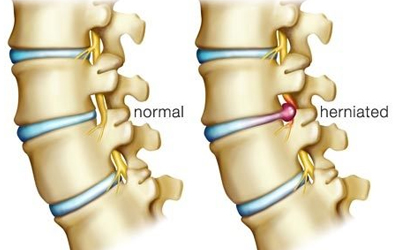
The spine lends structural stability and balance to our body helping us stand upright, while allowing flexibility in various movements. Moreover, it forms a protective canal in which the spinal cord, the most important part of the neural network, flows down from the brain to the rest of our body. The spinal column is an interconnected structure of bony (vertebrae) and cartilage tissues (intervertebral discs) and it is prone to age related wear and tear. Read through to learn more about a herniated disc, its manifestations and treatment options, with special reference to a minimally invasive surgical technique called endoscopic discectomy.
What is a herniated disc?
First, let’s understand an intervertebral disc. It is essentially a disc shaped, rubber like tough and flexible structure made of outer layers of fibrous cartilage with a softer gel like tissue in the centre. A disc lies between two adjoining vertebral bones of the spine and acts as a shock absorber. This disc undergoes wear and tear changes (degeneration) after a certain age. When the degenerated disc is subjected to any external strain or injury, the substance from the central part of the disc comes out through the tears in the outer fibrous layers. This condition is called a herniated disc. It is also referred to as prolapsed or slipped disc. A disc prolapse can occur in any part of the vertebral column; but, mostly observed in the lumbar (lower back) or in cervical (neck) region.
